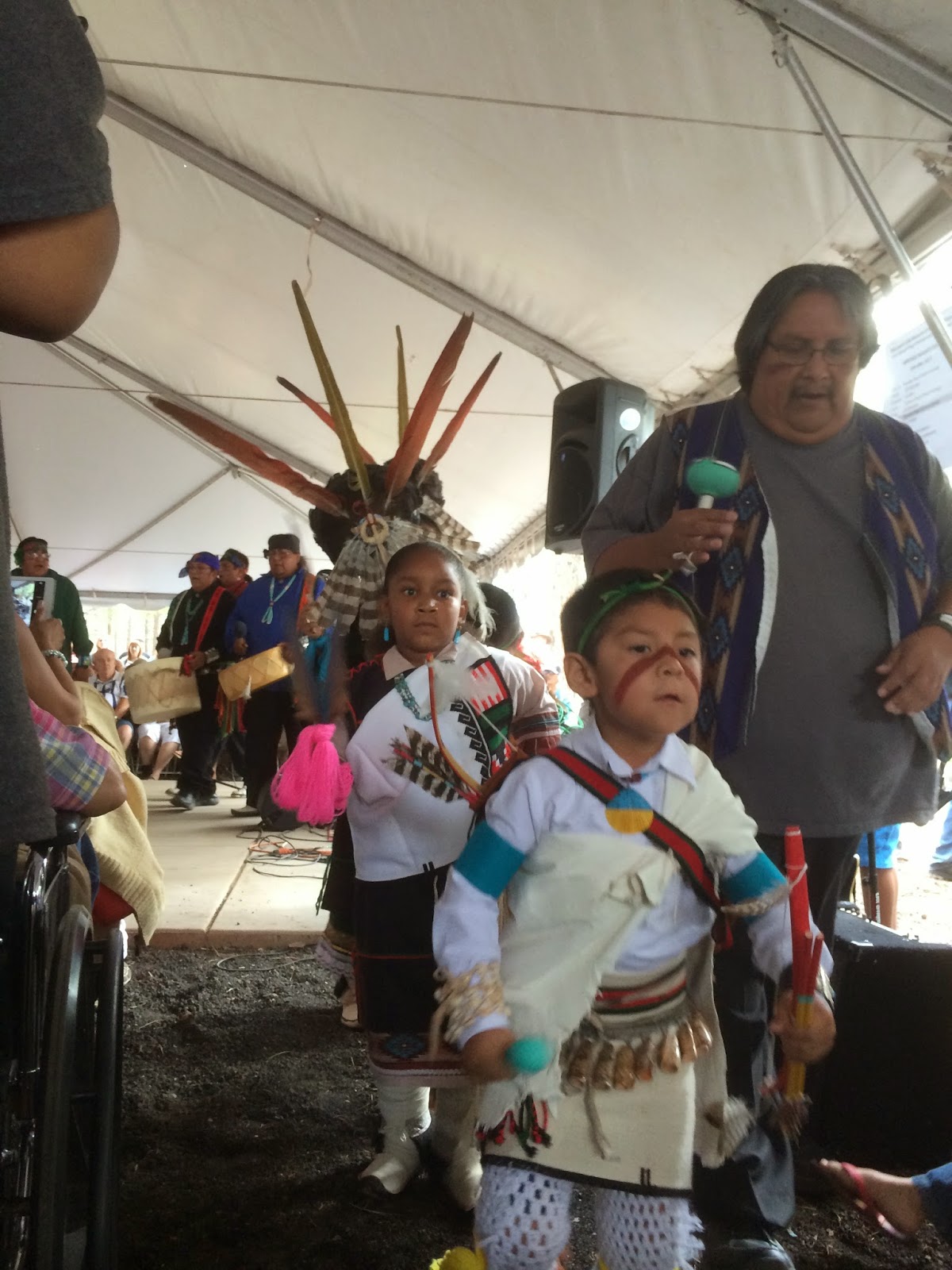For
most of my life I have been in London on the 4th of July since the Old Master
auction sales and art fairs are around that time. I never had a bucket list as such but there
was something I have wanted to do for 25 years and finally, not being in London
for Independence Day, I had the opportunity to go to The Hopi Festival at the
Museum of Northern Arizona (MNA). It was
right after this Festival in 1989 that we stopped at the MNA on the way to the
Grand Canyon and in their gift shop "discovered" the art of the Hopi.
This
time we were no longer strangers but friends with the director Robert Breunig
and his wife Karen Enyedy. We also had
friends and acquaintances among the visitors and exhibitors. Funnily enough my
first thought when we got there was an association with a fair we used to do in
Munich. All German events start with a
speech by the head of the organization and then a celebrity guest. In Munich it was the organizer of the fair
and the mayor or his representative. As exhibitors we waited impatiently for
the doors to open and the potential clients to come in. Here it was much the same only we were among
the potential clients on the outside. After the museum director welcomed
everyone to the 81st Hopi Festival the Hopi Cultural Preservation Officer, Leigh Kuwanwisiwma, thanked the visitors for coming and implicitly buying their
Hopi works of art.
| Robert Breunig (Director) w/ Leigh Kuwanwisiwma (Hopi Cultural Preservation Officer) |
The
Hopi Festival was conceived of by the wife of the founding Director of the MNA, Mary-Russell Ferrell Colton, in 1930. This was at the height of the Depression and
she wanted to help the Hopi get some income.
Later she helped the Hopi develop their own unique style of overlay
silver with Hopi motifs so that their work could be easily distinguishable from
that of their neighbors, the Navajo. The festival has continued until today
with a few years left out during World War II.
(It has always been a wonder to me that in spite of the barbaric
treatment the Native Americans have received at our hands, they have been the
most patriotic of citizens and have enlisted and fought for our country in
great numbers.)
Sitting
in the middle of Indian Country the museum today does a festival for each of
the Navajo, Zuni and Hopi tribes during the year. Flagstaff being the gateway to the Grand
Canyon it attracts a great many tourists, especially July 4th weekend.
After
the preliminaries we were invited in and there was art and artists
everywhere. It is not that large a
museum and almost every gallery was crowded with artists and the several
courtyards had artists under the portals. In all between 50 and 60 tables had one
or two artists at each. There was also a
consignment gallery where artists not exhibiting had given one or two objects
for volunteers to babysit and hopefully sell. It turned out that the awards for
Best of Show and Director’s Choice went to pieces in the consignment gallery.
Many
of the artists brought their tools to demonstrate their work, which is always
interesting and they are always willing to discuss their techniques,
inspirations, and stories behind their pieces. There was a healthy representation
of traditional Hopi items like pottery, jewelry, and carved katsina dolls but
there were also paintings and novelties like beaded hair bands (a huge hit with
little girls).
| Fermin Hawee, Silver Artist |
The opening night was a “members only” event with only about 300 invited guests it was ideal for viewing all the exhibits. When the general public came in the next day, it was a mob scene. There were about 3,000 visitors over the weekend. Entire families from grandparents to toddlers enthusiastically ogled the wares, picnicked on Indian food sold from stands in the parking lot and listened to traditional and contemporary Hopi music and watched youth dancers under a tent. Not only were cars parked in the usually ample parking areas near the museum but they ran a shuttle driven by museum staff to and from their conservation center up on the hill, opposite, and still cars were parked for between a quarter and half mile along the road.
"Ed Kabotie playing the flute"
CLICK ON ABOVE VIDEO TO PLAY
Though
we did not find anything that might be considered museum worthy we did buy some
pieces that tickled our fancy. Actually,
that is not entirely accurate. A Hopi quilt
which I would think a museum would be happy to have was up for a raffle for the
benefit of The Hopi School and we bought quite a number of tickets. Since I have never gotten anything I wanted
in a raffle I am not holding my breath but we can enjoy the anticipation. We should know soon!


No comments:
Post a Comment